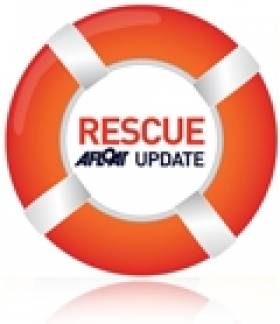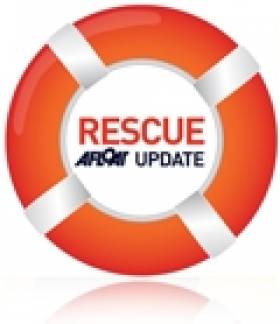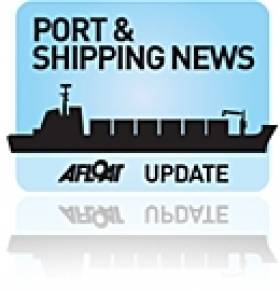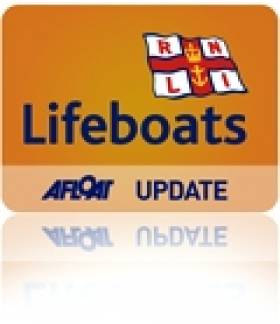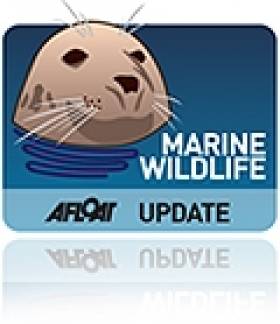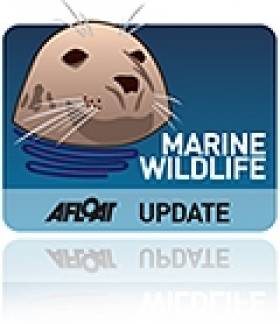Displaying items by tag: west cork
Glandore Harbour Yacht Club Gets New Clubhouse
#GLANDORE HARBOUR - After 27 years, Glandore Harbour Yacht Club has finally acquired a clubhouse in the picturesque West Cork harbour village.
"It may have taken a long time but the reward is that we have ended up with a perfect location for our clubhouse," says Commodore Diarmuid O’Donovan in a message on the club website.
The new facility has been funded by a combination of fundraising from past events and a mortgage of €140,000. More fundraising is required to may off the mortgage while the club begins work on the premises to bring them up to fire and disability certification.
"We are a small but thriving club and I am sure this will show as we continue to fundraise for the better of the club," says O'Donovan.
"We have come a long way over the past few years. Membership has grown significantly. We also need to update our sail training fleet and equipment to facilitate the expansion of the club. Junior sailing is the lifeline and future of our club.
"It is wonderful to see the enthusiasm of all involved and I am sure the clubhouse will be a welcome asset for all sailors alike."
Commodore O'Donovan also thanks the club's members and supporters, as well as past and present committee members, for the time and effort they have given to date.
Baltimore Whale Carcass Creating 'Rancid Oil Slick' in Conservation Area
#BALTIMORE WHALE - Nine weeks after the tragic demise of the Baltimore Harbour fin whale, its carcass is still afloat off West Cork, creating a “rancid oil slick” in a special conservation area, according to a local resident.
Tom McCarthy contacted Afloat.ie with the above image of the 65ft whale carcass, which was towed out to the grey seal breeding ground off the Carthys Islands in Roaringwater Bay and has apparently been left to rot.
“It has been left here since the middle of August to decay,” says Tom. “The rancid oil slick is clearly visible and extends for over 1km on relatively still days, the smell is horrendous."
As previously reported on Afloat.ie, plans were afoot to sink the fin whale carcass that was trapped in Baltimore Harbour in mid-August and endured a harrowing few days trapped in Baltimore Harbour before it died from what's presumed to be a combination of illness and injury.
Tom McCarthy claims that the National Parks and Wildlife Service (NPWS) has washed its hands of the situation, considering the enormous marine mammal carcass to be a natural occurrence "even though the animal beached and died several miles [away and] was wrapped in a net and towed to its final resting position".
The location is in a Special Area of Conservation - yet according to Tom, no risk assessment appears to have been carried out beforehand.
"Ten minutes on the internet would show that whales are perhaps the most contaminated animals in the world," he says. "Their blubber is contaminated with persistent organic compounds such as PCBs, DDT, dioxins, etc and the internal organs such as the liver and kidneys are 'high', 'very high' or 'staggeringly high' in mercury, cadmium, chromium, etc.
"Some beached whales are found to be so contaminated the whale itself has to be considered as hazardous waste and disposed of as such."
Tom notes that the area is fished extensively for shrimp, crab, lobster and pollock, and that the rotting carcass is in close proximity to several mussel farms.
"It seems inevitable that as the whale continues to decay and is eaten whatever contaminants were present prior to death will re-enter the food chain."
He compares the current situation to a similar whale carcass disposal in Sligo last year, where the flesh was cut off and sent for incineration while the bones were marked for later skeletal recreation and sent for composting.
Regarding the West Cork whale carcass, Tom says: "Some estimates say it will take three years for the whale to completely decay."
Tom adds that he has been in contact with Cork County Council and hopes to hear on Monday about plans for a more appropriate method of disposal for the whale carcass.
More On Power Boat Fireball Off West Cork
#BOAT FIRE - The Irish Independent has more on the incident in which a motor cruiser caught fire off West Cork at the weekend, as previously reported on Afloat.ie.
Denis Ryan, a car dealer from Inishannon in Co Cork, says he is lucky to be alive after a sudden fire engulfed his power boat off the Seven Heads Peninsula on Saturday afternoon.
Ryan was piloting his boat alone in the waters near Courtmacsherry when the incident occurred, destroying the plastic-hulled vessel in a matter of minutes.
His immediate distress signal was picked up by the Naval Service vessel LE Niamh which was in the area at the time, and Ryan himself was quickly rescued from the water by a passing yachtsman.
Diver Dies After Saltee Islands Incident
#RESCUE - RTÉ News reports that a man has died following a diving accident off the Saltee Islands at the weekend.
The 25-year-old is believed to have rapidly ascended from 25 metres below the surface while on a dive with three others on the morning of Saturday 22 September.
Irish Coast Guard operatives from Waterford and Kilmore Quay were involved in the operation to rescue the man, who was later pronounced dead at Waterford Regional Hospital.
Meanwhile, RTÉ News also reports on the rescue of a man from a burning motor cruiser off the Seven Heads Peninsula in West Cork on Saturday afternoon.
Crew aboard the Naval Service vessel LE Niamh, on patrol in the area, transferred the man from his vessel to Kinsale. The boat later sank after attempts to extinguish the fire.
Hazardous Cargo Containers Drifing Towards Ireland
PORT & SHIPPING NEWS - A number of hazardous containers believed to have fallen from a cargo ship this summer are drifting towards Ireland's southwest coast, the Irish Examiner reports.
The containers are said to have slipped from the deck of the MSC Flaminia, a German-registered cargo vessel which caught fire on 14 July in the middle of the Atlantic Ocean, with the loss of two crew and forcing the rest to abandon ship.
The vessel had been en route from North Carolina in the United States to Brememhaven in northern Germany when the incident occurred.
Among the thousands of containers it was carrying were 149 classed as 'dangerous goods', their exact nature not yet confirmed, and it is thought some of these are among the containers that fell into the sea and went missing as the ship listed in mid-ocean.
As reported by the Maritime Bulletin, there was some speculation as to whether the missing containers slipped off deck or were jettisoned.
The containers have since appeared in the main cargo shipping lanes off the southwest coast, posing a danger to transatlantic vessels.
Operations have already begun to retrieve the containers and tow them into Castletownbere in West Cork.
The Irish Examiner has more on the story HERE.
Surface Search for Missing Diver Winds Down
#MISSING DIVER - Teams were still searching yesterday at a wreck site off Cape Clear for a diver missing since Tuesday, according to The Irish Times.
A Defence Forces spokesperson told the paper that a sonar device would be employed to scan the seabed for any sign of 54-year-old Reinhardt Teschke, who failed to resurface from a 90m dive on the wreck of British merchant vessel the Minnehaha.
As previously reported on Afloat.ie, Baltimore RNLI launched both its inshore and all-weather lifeboats to the scene south of Balitmore Harbour in West Cork on Tuesday evening to search for the German diver, one of a party of three at the wreck site.
Irish Coast Guard helicopter Rescue 115 and the Naval Service vessel LE Ciara were also involved in the surface search, which was set to be wound down yesterday.
Search Resumes for Missing Wreck Diver off Baltimore
#rnli – Baltimore Lifeboat have resumed a search for a missing diver this morning at a wreck site south of Baltimore Harbour in West Cork.
Both the inshore lifeboat and all weather lifeboat were launched yesterday evening in response to a request from the coastguard to assist in locating a diver reported missing earlier in the afternoon.
The diver had been one of a party of three diving at a wreck site 12 miles south of Baltimore Harbour. The divers are reported by the RNLI to be of German and the dive site the wreck of the Minnehaha.
Weather conditions were excellent with a 1.5 metre swell and force 3-4 winds. The Navy vessel LE Ciara, Coastguard Helicopter 115 and the Holly Joe were all involved in the search.
As darkness approached last night the inshore lifeboat (ILB) was stood down and returned to Baltimore at 21.10 approx. Onboard the B-class ILB Bessie, were Helm Youen Jacob, Shane MacSweeney and Ger O'Brien. On board the Tamar class ALB Alan Massey, were Coxswain Kieran Cotter, Cathal Cottrell (mechanic), John Rochford, Brian MacSweeney, Jerry Smith and Aidan Bushe.
Samples Taken from Baltimore Fin Whale Carcass
#MARINE WILDLIFE - The Irish Examiner reports that samples from the fin whale that stranded and died in Baltimore Harbour last week have been sent to Dublin for analysis.
Samples of skin and blubber will be tested by marine science experts at the Irish Cetacean Tissue Bank in the Natural History Museum as well as at the Marine Institute, while a student studying for a PhD on the feeding ecology of fin whales will also examine the remains.
As reported yesterday on Afloat.ie, the whale carcass has been towed out of the inner harbour as preparations are made to sink it to the seabed, where marine life such as fish and crabs will quickly strip it down to a skeleton that locals hope to put on display in the West Cork town.
A post-mortem will not be carried out by the Irish Whale and Dolphin Group (IWDG) due to lack of funding for the specialised procedure. A previous necropsy of a fin whale stranded at Courtmacsherry was funded by the US-based magazine National Geographic.
Double Tragedy for Beara Peninsula as Retired Teacher Drowns
#NEWS UPDATE - The Irish Times reports that the body of a retired schoolteacher was recovered from the sea off Castletownbere in West Cork on Friday in the second tragedy the area has seen this week.
Sixty-six-year-old Pearse Lyne drowned after his fishing boat capsized in poor weather off the Beara Peninsula.
A search operation was launched around 1.30pm after a cliffwalker spotted the upturned vessel near the Dzogchen Buddhist retreat, and the body of the father of four and former national school principal was discovered some 90 minutes later in the water near Pulleen harbour.
The sad incident occurred just says after farmer and poet John O'Leary drowned off Cod's Head when the Enterprise sailing dinghy he was sailing with his teenage son Christopher capsized.
As previously reported on Afloat.ie, Minister for the Marine Simon Coveney paid tribute to O'Leary as well as Quilty fishermen Michael Galvin and Noel Dickinson, who drowned earlier this week off the Clare coast.
Meanwhile, in Dongeal a diver was rescued after getting into difficulty in Lough Salt on Thursday evening, according to the Donegal Democrat.
The Donegal native was one of two divers in the lough at the time, and is believed to have experienced buoyancy issues while some 50m below the surface.
He was taken to Letterkenny General Hospital and later transferred to Craigavon for treatment for decompression sickness. The man is now recovering.
His diving partner, an Italian national living in Ireland, made it to shore unharmed.
'Nothing Can Be Done' for Stranded Whale in Baltimore Harbour
#BALTIMORE WHALE - Hopes are fading for an injured whale trapped in Baltimore Harbour, according to the Irish Independent.
It's being reported that the fin whale, which was injured on sharp rocks and beached off the pier in the West Cork harbour yesterday, is being left to die as it is too ill to be helped back to deeper water and too large to be euthanised.
It had been hoped that the whale would return to the sea under its own power by high tide but that sadly did not happen.
"Nothing can be done," Dr Simon Berrow of the Irish Whale and Dolphin Group (IWDG) told the Independent. "It can't be refloated or drigged. All you can do is let nature take its course."
The 40-foot whale became something of an instant attraction in Baltimore as crowds gathered in the harbour, as TheJournal.ie reports.
However, marine wildlife experts believe that the young whale must have been sick or malnourished to have made it so far from the open sea into the sheltered harbour.
The IWDG's Padraig Whooley also reiterated that most whale strandings end in death, and Brendan Cottrell of the Baltimore RNLI said the best thing was to do their best not to stress the animal further.
Elsewhere, a female fin whale stranded on a beach in Cornwall has died despite efforts to save her, according to the Daily Mail.
The 65-foot whale was put down by vets from British Divers Marine Life Rescue after she was found beached at Carylon Bay on the south coast on Monday morning. The whale was was described as "incredibly undernourised".



